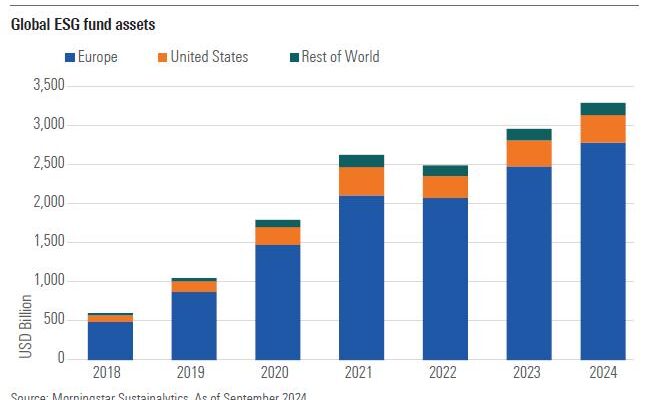In recent years, sustainable investing has gained significant traction among investors, driven by a growing awareness of environmental, social, and governance (ESG) issues. As more individuals and institutions recognize the importance of aligning their investments with their values, the landscape of finance is evolving. This article explores the rise of sustainable investing, key trends to watch, and the implications for investors and the broader market.
Understanding Sustainable Investing
Sustainable investing refers to investment strategies that consider not only financial returns but also the impact of investments on society and the environment. This approach encompasses a range of practices, including:
-
ESG Integration: Incorporating environmental, social, and governance factors into investment analysis and decision-making processes.
-
Impact Investing: Investing in projects or companies that aim to generate positive social or environmental outcomes alongside financial returns.
-
Socially Responsible Investing (SRI): Excluding certain sectors or companies from investment portfolios based on ethical or moral criteria.
The Importance of Sustainable Investing
The rise of sustainable investing is driven by several factors:
-
Changing Consumer Preferences: Consumers are increasingly demanding that companies operate responsibly and sustainably. This shift in consumer behavior is influencing corporate practices and investment strategies.
-
Regulatory Pressure: Governments and regulatory bodies are implementing policies that promote sustainability and require greater transparency regarding ESG practices. This regulatory environment is encouraging investors to consider sustainability in their investment decisions.
-
Financial Performance: Research has shown that companies with strong ESG practices often outperform their peers in the long run. Investors are recognizing that sustainable practices can lead to better financial performance and reduced risk.
-
Global Challenges: Issues such as climate change, social inequality, and resource scarcity are prompting investors to seek solutions that address these challenges. Sustainable investing offers a way to contribute to positive change while pursuing financial goals.
Key Trends in Sustainable Investing
As sustainable investing continues to evolve, several key trends are emerging that investors should watch:
1. Increased Demand for ESG Data and Transparency
Investors are increasingly seeking reliable ESG data to inform their investment decisions. The demand for transparency regarding companies’ sustainability practices is driving the development of standardized metrics and reporting frameworks.
-
Data Providers: Companies that provide ESG data and analytics are gaining prominence, helping investors assess the sustainability performance of potential investments.
-
Regulatory Standards: Regulatory bodies are working to establish standardized reporting requirements for ESG disclosures, making it easier for investors to compare companies’ sustainability practices.
2. Growth of Green Bonds and Sustainable Finance
The market for green bonds and sustainable finance is expanding rapidly. Green bonds are fixed-income securities specifically earmarked for projects that have positive environmental impacts.
-
Green Bond Market: The issuance of green bonds has surged in recent years, providing investors with opportunities to finance renewable energy projects, sustainable infrastructure, and other environmentally friendly initiatives.
-
Sustainable Finance Initiatives: Financial institutions are increasingly offering sustainable finance products, such as loans and investment funds, that prioritize ESG considerations.
3. Rise of Impact Investing
Impact investing is gaining momentum as investors seek to generate measurable social and environmental benefits alongside financial returns. This trend is particularly appealing to millennials and younger investors who prioritize purpose-driven investments.
-
Social Enterprises: Investments in social enterprises that address pressing societal challenges, such as poverty alleviation and access to education, are becoming more popular.
-
Measurable Impact: Investors are increasingly focused on measuring the impact of their investments, using metrics and frameworks to assess social and environmental outcomes.
4. Integration of Climate Risk into Investment Strategies
As the effects of climate change become more pronounced, investors are recognizing the importance of integrating climate risk into their investment strategies. This trend involves assessing how climate-related factors may impact the financial performance of investments.
-
Climate Risk Assessments: Investors are conducting climate risk assessments to evaluate the potential impact of climate change on their portfolios and make informed decisions.
-
Transition to a Low-Carbon Economy: Companies that are proactively transitioning to low-carbon business models are likely to attract investment as the world shifts toward sustainability.
5. Focus on Diversity and Inclusion
The social aspect of sustainable investing is gaining attention, with investors increasingly prioritizing diversity and inclusion within companies. This trend reflects a growing recognition of the importance of social equity in achieving sustainable outcomes.
-
Diversity Metrics: Investors are looking at diversity metrics, such as gender and racial diversity on corporate boards, as indicators of a company’s commitment to social responsibility.
-
Inclusive Business Practices: Companies that prioritize inclusive business practices are more likely to attract investment from socially conscious investors.
The Implications of Sustainable Investing
The rise of sustainable investing has significant implications for investors, companies, and the broader market:
1. Shifting Investment Strategies
Investors are increasingly incorporating ESG factors into their investment strategies, leading to a shift in how portfolios are constructed. This trend may result in a reallocation of capital toward companies with strong sustainability practices.
2. Enhanced Corporate Accountability
As investors demand greater transparency and accountability regarding ESG practices, companies are being held to higher standards. This pressure is driving improvements in corporate governance and sustainability initiatives.
3. Long-Term Value Creation
Sustainable investing emphasizes long-term value creation rather than short-term gains. This approach encourages companies to adopt sustainable practices that benefit both their bottom line and society as a whole.
4. Innovation and Growth Opportunities
The focus on sustainability is driving innovation across industries. Companies that prioritize sustainable practices are likely to identify new growth opportunities and gain a competitive advantage in the market.
Conclusion
The rise of sustainable investing represents a fundamental shift in the investment landscape. As investors increasingly prioritize environmental, social, and governance factors, the demand for transparency, accountability, and measurable impact will continue to grow. By staying informed about key trends and embracing sustainable practices, investors can contribute to positive change while achieving their financial goals. As we move forward, the integration of sustainability into investment strategies will not only shape the future of finance but also play a crucial role in addressing the pressing challenges facing our world.




